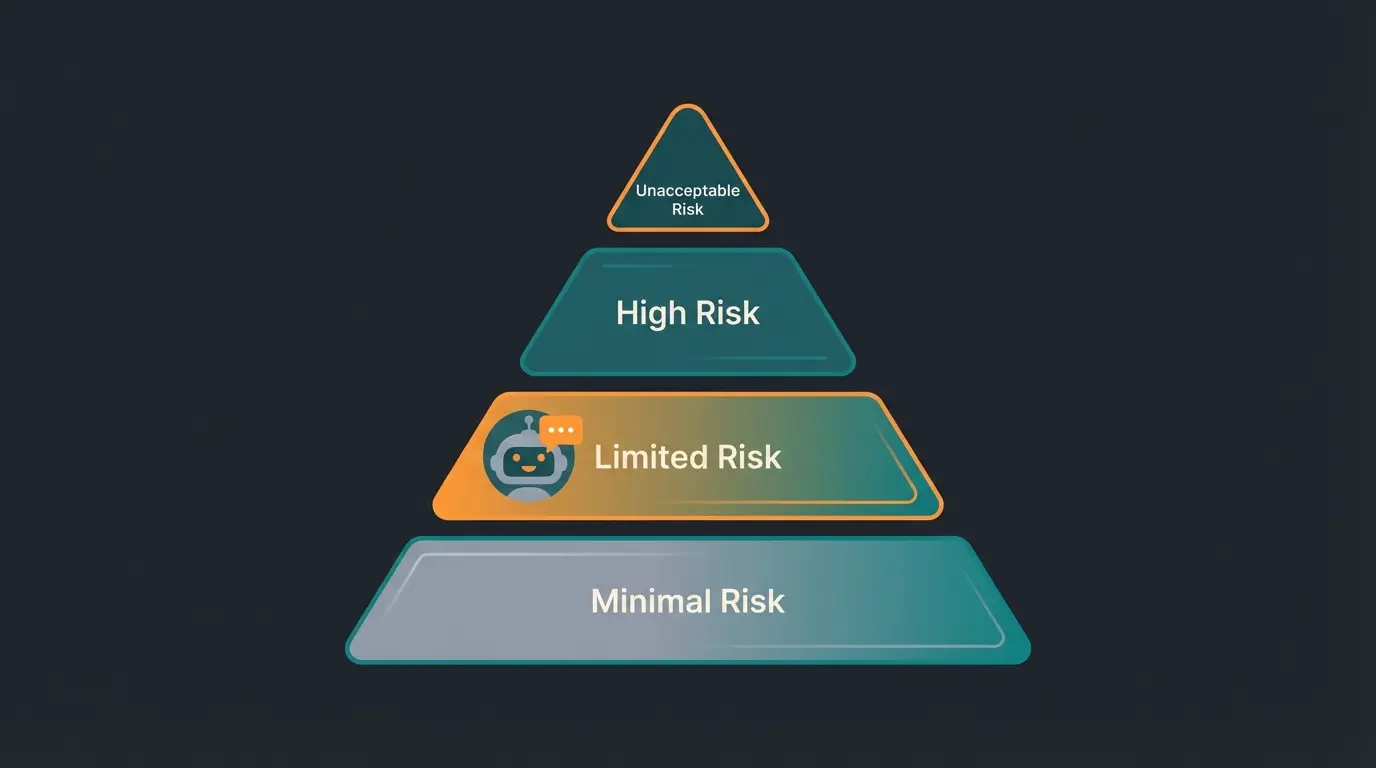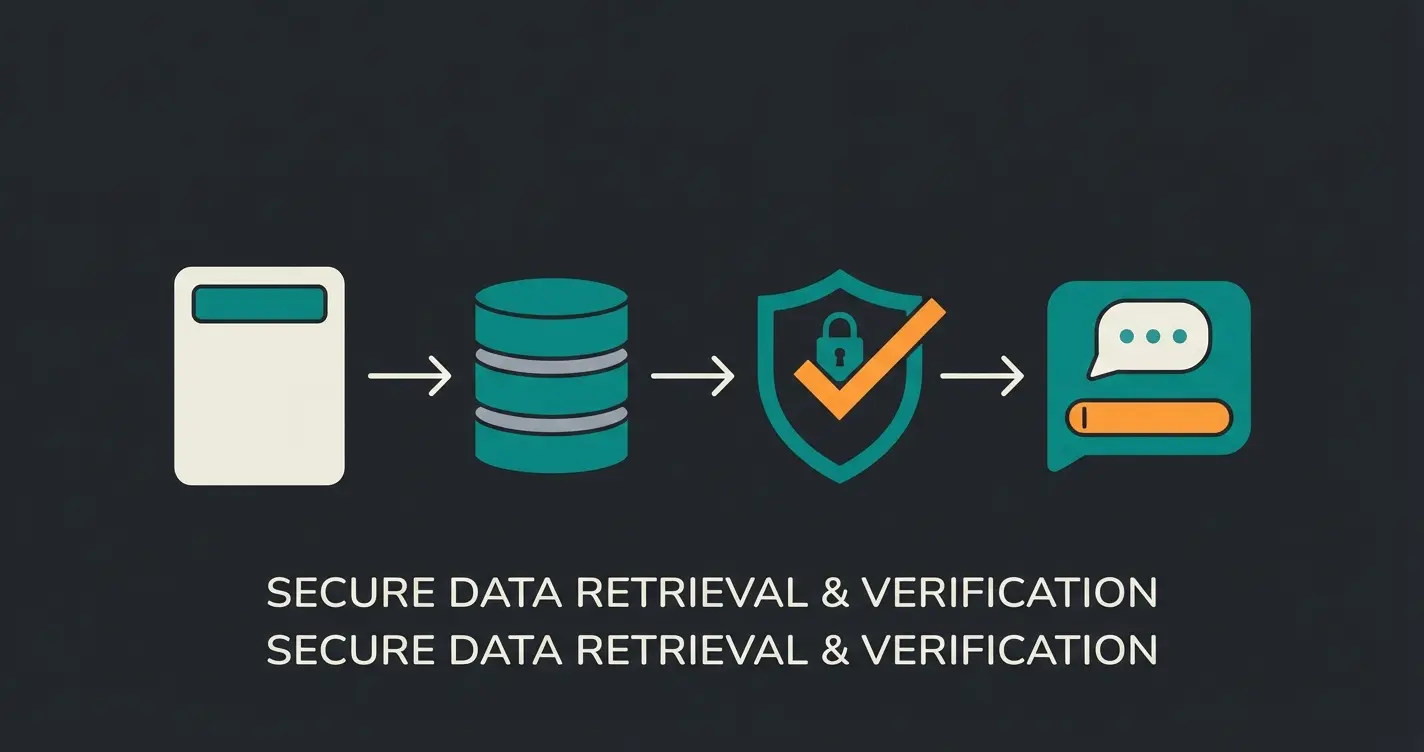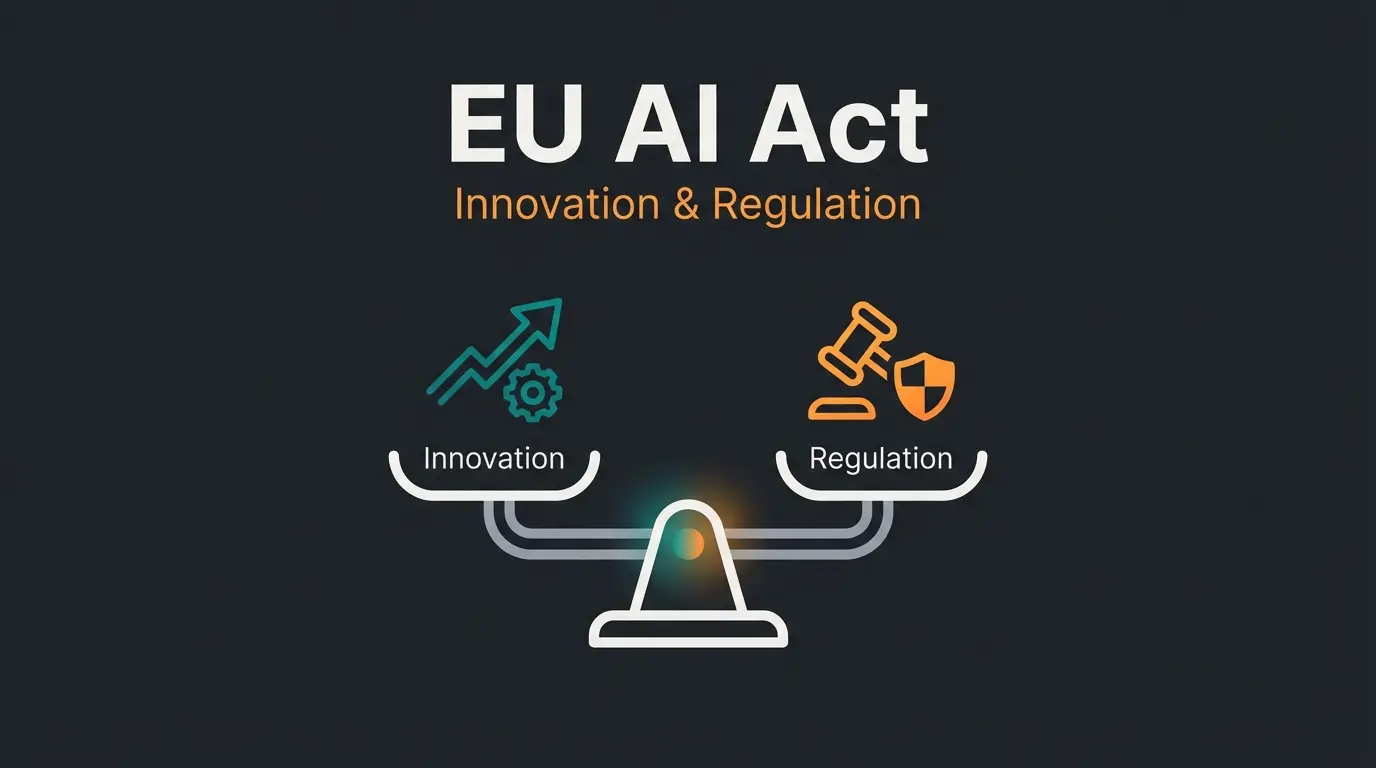Introduction: The EU AI Act and Its Significance for AI Chatbots
The EU AI Act marks a turning point in the regulation of artificial intelligence in Europe. Having entered into force on August 1, 2024, this groundbreaking law aims to shape the development and deployment of AI technologies responsibly. For e-commerce companies and online shops deploying EU AI Act Chatbots for sales and support, understanding this regulation is no longer optional—it is a critical business requirement.
The EU AI Act follows a risk-based approach and categorizes AI systems into four risk classes: unacceptable risk (prohibited), high risk (strictly regulated), limited risk (transparency requirements), and minimal risk (unregulated). This classification has far-reaching implications for the development, deployment, and monitoring of AI systems, including digital assistants.
For companies that have integrated Chatbot Compliance protocols into their business processes or plan to do so, it is essential to understand the implications of the EU AI Act. The regulation affects not only providers of AI systems but also users, importers, and distributors within the EU or those influencing people in the EU. With potential penalties of up to 35 million euros or 7% of global annual turnover, the EU AI Act underscores the urgency of compliance.
What Are AI Chatbots According to the EU AI Act?
Under the EU AI Act, AI chatbots are viewed as advanced dialogue systems based on artificial intelligence. They fall under the broad definition of AI systems, understood in the law as software developed with machine learning techniques, logic- and knowledge-based approaches, or statistical methods, capable of generating content, predictions, recommendations, or decisions for specific objectives defined by humans.
AI Chatbots are characterized by the following features:
- Natural Language Processing (NLP): Ability to understand and generate human language.
- Context Understanding: Analysis and interpretation of conversation context.
- Learning Capability: Continuous improvement through interactions.
- Personalization: Adapting responses to individual user needs.
- Autonomy: Ability to make decisions and generate responses independently.
Unlike traditional rule-based chatbots based on predefined scripts, AI chatbots use complex algorithms and data analysis to respond dynamically to user inputs. This capability for adaptive interaction and decision-making makes them a powerful tool for AI customer service, but it also carries potential risks that the EU AI Act addresses.
The classification of a chatbot as an AI system under the EU AI Act depends on its specific functionality and area of application. The decisive factor is whether the chatbot independently generates content, makes decisions, or provides recommendations that go beyond simple predefined answers. The more autonomous and complex the chatbot's decision-making processes, the more likely it is to be classified as an AI system under the law.

Classification of AI Chatbots in the EU AI Act
The EU AI Act takes a risk-oriented approach to regulating artificial intelligence. For EU AI Act Chatbots, it is important to understand how they fit into this framework.
General Classification
The EU AI Act divides AI systems into four risk categories:
- Unacceptable Risk: AI applications that are prohibited (e.g., social scoring).
- High Risk: AI systems with strict regulatory requirements.
- Limited Risk: AI with transparency requirements (Art. 50).
- Minimal Risk: Largely unregulated AI applications.
Most e-commerce AI chatbots fall into the categories of limited or minimal risk. However, the exact classification depends on the specific area of application and the functions of the chatbot.
Risk Categories for AI Systems in E-Commerce
For Chatbot Compliance, the categories of limited and high risk are particularly relevant:
Limited Risk: This includes many standard chatbots for customer service or product consultation. They must fulfill transparency requirements, such as informing the user that they are interacting with an AI system. This is the "labeling obligation."
High Risk: Chatbots could be classified as high-risk if they are used in sensitive areas such as health advice (e.g., an online pharmacy bot recommending medication) or financial services (e.g., credit scoring). Strict requirements regarding data protection, security, and human oversight apply here.
The precise classification of an AI chatbot requires a careful examination of its functions and area of application. Companies should familiarize themselves with the criteria of the AI Act Germany and EU regulations to design their chatbots in a legally compliant manner.
Guide to Classifying an AI Chatbot According to EU AI Act Standards
To classify an AI chatbot according to the standards of the EU AI Act, companies should follow a structured approach. Here is a guide in three steps:
1. Assessment of the Area of Application
The first step is a precise analysis of the chatbot's area of application:
- Industry: In which sector is the chatbot used? Areas like health, finance, or public services are particularly sensitive.
- Target Group: Who are the users? Special caution is required for vulnerable groups such as children or the elderly.
- Decision Relevance: What are the effects of interactions with the chatbot? The greater the potential consequences (e.g., denying a loan vs. recommending a t-shirt), the higher the risk.
2. Analysis of Functionalities
The next step examines the specific capabilities of the chatbot:
- Complexity: How advanced are the AI functions? Simple rule-based systems carry less risk than highly developed Machine Learning models.
- Autonomy: To what extent does the chatbot make independent decisions?
- Learning Capability: Does the chatbot adapt through interactions? Continuous learning potentially increases risk.
For AI product consultation, for example, it must be checked how far-reaching the chatbot's recommendations are and whether it processes sensitive customer data.
Does the bot give medical, credit, or legal advice? If YES -> High Risk. If NO -> Continue.
Does the bot generate text (GenAI) or use buttons? If GenAI -> Limited Risk (Transparency required).
Does the bot close sales? If YES -> Liability Check required (UWG/Warranty).
3. Data Protection and Security Aspects
Finally, data protection and security must be considered:
- Data Processing: What type of data does the chatbot process? Personal or sensitive data is particularly critical.
- Data Storage: How and where is the data stored? EU data protection standards (GDPR) must be met.
- Security Measures: What precautions exist against misuse or unauthorized access?
Compliance with EU data protection standards is crucial for risk assessment and compliance with the EU AI Act. By carefully evaluating these aspects, companies can classify their AI chatbots according to EU AI Act requirements and take necessary compliance measures. This not only ensures legality but also promotes user trust in AI-supported communication.
Limited Risk AI Chatbots: The Standard for E-Commerce
Under the EU AI Act, AI chatbots classified as limited risk systems are subject to fewer regulatory requirements. This category covers most everyday applications of AI chatbots in e-commerce, which typically pose no significant danger to user rights or safety.
Characteristics and Examples
Limited risk AI chatbots are characterized by the following features:
- Limited Functionality: They perform simple tasks, such as answering frequently asked questions or providing general information.
- No Sensitive Data: They do not process highly sensitive personal information (like health records).
- Transparent Interaction: Users are aware they are interacting with an AI system.
- No Autonomous Decisions: They do not make important decisions without human review.
Typical examples of limited risk AI chatbots include:
- Customer Service Bots: Like the AI-supported customer service developed by Qualimero handling basic inquiries.
- Product Consultation Assistants: Chatbots that support product selection without directly making legally binding decisions.
- Information Bots: AI systems providing general information about companies or services.
Regulatory Requirements: The Transparency Obligation
Although limited risk AI chatbots are less strictly regulated, they must still meet specific Chatbot Compliance requirements:
- Transparency: Users must be informed that they are interacting with an AI system. This prevents "Dark Patterns" where users are tricked into thinking they are speaking to a human.
- Data Protection: Compliance with GDPR and other relevant data protection regulations.
- Non-discrimination: The chatbot must not produce or disseminate discriminatory content.
- Monitoring: Regular review of the system's performance and impact.
These requirements aim to ensure a minimum level of safety and trust for users without overly restricting innovation. Companies deploying limited risk AI chatbots should view these guidelines as an opportunity to strengthen customer trust.
Practical Examples: Compliant Disclaimers
How do you implement this labeling obligation in practice? Here are examples of good and bad implementations:
| Implementation Status | Example Text / Visual | Why? |
|---|---|---|
| ❌ Non-Compliant | "Hi, I'm Hans from Support!" (Human photo) | Deceptive. Implies a human interaction. |
| ✅ Compliant | "I am your Virtual Product Assistant (AI)." | Clearly labels the non-human nature. |
| ✅ Compliant | "AI-Bot: How can I help you today?" | Immediate transparency in the greeting. |
Don't risk fines. Get our compliant AI Product Consultant solution tailored for e-commerce.
Check Compliance NowThe Hidden Risk: Liability for Product Advice (Falschberatung)
While the EU AI Act focuses on safety and fundamental rights, e-commerce managers must also consider the Liability for Wrong Advice (Falschberatung) and Unfair Competition (UWG). This is the "Product Liability Trap."
Unlike a simple FAQ bot that states opening hours, a Product Consultant bot makes specific claims. If your bot says, "This bicycle frame fits a person who is 2.10 meters tall," and that statement is false, you are liable for the defect (Sachmangelhaftung). The AI Act demands transparency, but consumer protection laws demand accuracy.
The Solution: RAG and Grounding
To mitigate this liability risk, "Grounding" is essential. This involves restricting the AI to only use data provided in your verified product database, a technique often called Retrieval Augmented Generation (RAG). This ensures the bot doesn't hallucinate features that don't exist.

High Risk AI Chatbots: When Caution is Required
The EU AI Act defines certain AI applications as high-risk systems subject to stricter regulatory requirements. AI chatbots can fall into this category under certain circumstances, which has far-reaching consequences for developers and users.
Criteria for High-Risk Classification
An AI chatbot is classified as a high-risk system if it meets the following criteria:
- Decision-Making Power: The chatbot makes autonomous decisions with significant impact on individuals or groups.
- Sensitive Areas: Deployment in critical sectors like healthcare, finance, or education.
- Personal Data: Processing large amounts of sensitive personal information.
- Safety Relevance: Potential threat to the safety or fundamental rights of users.
Examples and Use Cases
Concrete examples of AI chatbots that could be classified as high-risk systems include:
- Medical Diagnostic Bots: Chatbots that diagnose diseases or recommend treatments.
- Financial Advice Bots: AI systems making autonomous investment decisions or credit assessments.
- Governmental Decision Bots: Chatbots deciding on social benefits or residency rights.
- Psychological Counseling Bots: AI systems offering therapeutic support without human supervision.
Particular attention is paid to digital accessibility and the avoidance of discrimination. High-risk AI chatbots must be designed to be accessible to all user groups and show no bias or unfair treatment.
Compliance with these strict requirements requires significant resources and expertise. Companies developing or deploying high-risk AI chatbots must carefully weigh whether the potential benefit justifies the regulatory challenges. In many e-commerce cases, it is advisable to design AI systems to fall into the lower-risk category by limiting their scope (e.g., "Information only, not medical advice").
Practical Tips for EU AI Act Chatbot Compliance
To ensure the compliance of AI chatbots with the EU AI Act, companies should take the following practical measures:
- Documentation and Transparency: Create comprehensive documentation on the functionality, purpose, and data basis of your AI chatbot. Ensure this information is easily accessible to users.
- Conduct Risk Assessment: Perform a thorough risk assessment. Consider potential impacts on fundamental rights, safety, and discriminatory effects. This helps in correct classification.
- Implement Guardrails (RAG): Ensure your bot cannot invent facts. Connect it strictly to your product database.
- Human Oversight: Ensure appropriate human oversight is guaranteed, especially if it edges towards high risk. Implement escalation mechanisms (handovers) for complex or sensitive queries.
- Regular Audits: Conduct regular reviews of your AI chatbot to ensure it continues to meet EU AI Act requirements.
Conclusion: The Future of AI Chatbots Under the EU AI Act
The EU AI Act marks a turning point for the development and use of AI chatbots in Europe. It creates a clear regulatory framework that promotes innovation while ensuring the protection of fundamental rights. For companies, this means paying increased attention to compliance and ethical aspects when developing and deploying AI chatbots.
The future of AI chatbots under the EU AI Act promises a balance between technological progress and responsible use. Companies that proactively meet the requirements of the law will not only minimize legal risks but also strengthen customer trust. Ultimately, the EU AI Act will help make AI chatbots reliable, transparent, and ethically sound tools in digital communication.
Yes, the EU AI Act applies to any provider or user of AI systems within the EU, regardless of company size. However, for standard e-commerce chatbots (Limited Risk), the main obligation is simply transparency (labeling the bot).
The EU AI Act entered into force on August 1, 2024. However, implementation is phased, with different rules applying over a transition period extending to 2026.
No. Simple FAQ bots that answer predefined questions are typically considered 'Limited Risk' or even 'Minimal Risk', provided they do not make sensitive decisions (like credit scoring).
Fines can be severe, reaching up to 35 million euros or 7% of total worldwide annual turnover for the most serious infringements (like using prohibited AI practices).
Ensure it is clearly labeled as an AI, use RAG technology to prevent false information (hallucinations), and provide a way for users to escalate issues to a human agent.
Switch to a compliant, safe, and high-converting AI Product Consultant today.
Start Free Trial
